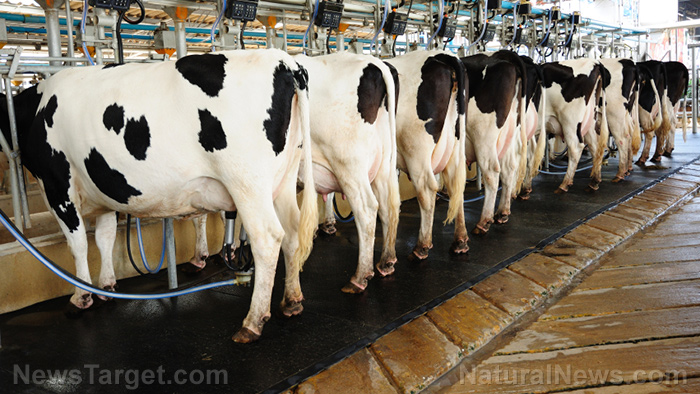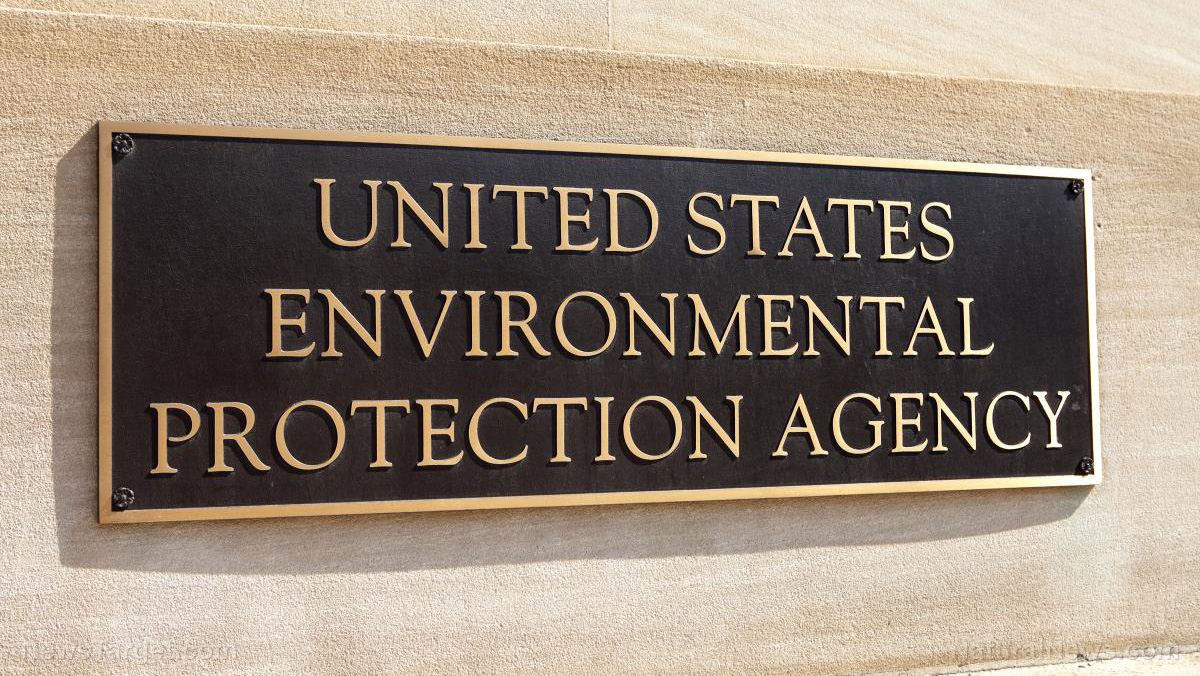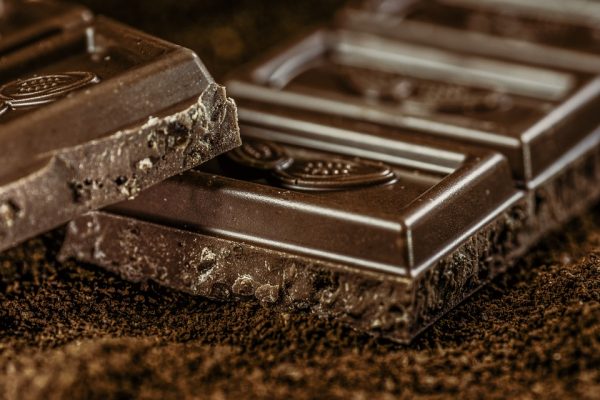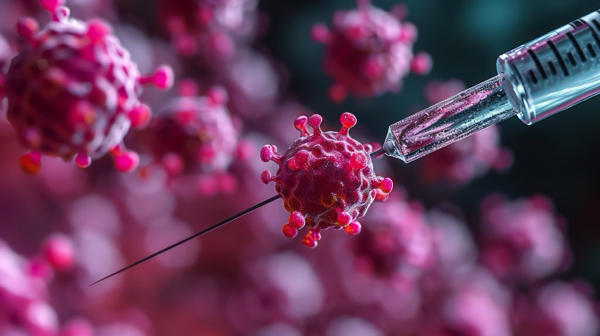FDA Approves 3-NOP for use in dairy cattle to allegedly reduce methane emissions, but questions remain about its long term safety
By ljdevon // 2024-12-04
Tweet
Share
Copy

Climate scientists claim to have found a way to engineer cow farts to produce 30% less methane. The U.S. Food and Drug Administration (FDA) has granted approval for the use of 3-Nitrooxypropanol (3-NOP) as a feed additive for lactating dairy cattle. This approval, announced on May 28th, allows farmers to use the commercial product Bovaer™ to help mitigate enteric methane emissions in dairy cattle by around 30%. While this is great news for the climate change agenda (which is a hoax to begin with, by the way), more long term research is needed to understand the chemical compound's effects on the cow's microbiome and its ability to assimilate nutrients.
3-NOP reduces methane emissions, but is it good for the animals’ microbiome long term?
Research indicates that 3-NOP can significantly reduce methane emissions from dairy cattle. While the scientific literature shows a pattern of safety, there are unknowns for long term exposure to the chemical, and its effects on the cow’s microbiome. A meta-analysis conducted by Pennsylvania State University found that supplementing cattle with 3-NOP reduced methane emissions by 123 grams per day (28%) without affecting feed intake or milk yield. Interestingly, the study also noted a 90-gram per day increase in milk fat yield. However, some studies show that certain breeds are affected differently, and diets also play a large role in 3-NOP's effects. Another meta-analysis from the University of California, Davis, observed a 33% reduction in methane emissions but also highlighted that the effectiveness of 3-NOP was influenced by the fiber content of the cow's diet. Lower fiber levels and higher fat levels in the diet were found to increase the efficacy of the additive. With fiber level being a contributing factor in the efficacy of 3-NOP, there is likely a connection to the gut microbiome of the cow. 3-NOP could potentially lower milk production over time by affecting the gut microbiome of the cow. If higher fiber levels are needed over time, the cows’ gut microbiome could potentially be taking on damage long term. The need for more fiber suggests potential nutrient depletion and the need for cultivating commensal microbes for greater nutrient assimilation. While short-term results are promising for controlling methane, questions remain about the long-term effects of 3-NOP supplementation. A European study involving full-lactation supplementation found a 21% reduction in methane emissions without affecting dry matter intake. Notably, the study observed a 6.5% increase in energy-corrected milk yield in cows supplemented with 3-NOP. However, further research, particularly studies conducted under U.S. production conditions, is needed to confirm these findings. One study found that 3-NOP can effectively decrease methane emissions in dairy cows across diets, but the level of mitigation was greater when the cows were supplemented in a corn silage-based diet compared with a grass silage-based diet. Another study showed that cows did not approve of a 3-NOP diet at first, and had to be acclimated to it over time -- a natural indicator that something in 3-NOP may be negatively affecting the livestock. Another important study found that 3-NOP or canola oil supplementation significantly reduced the diversity of the rumen microbiome. 3-NOP supplementation "resulted in targeted changes in the microbiome," increasing the relative abundance of Bacteroidetes and decreasing the relative abundance of Methanobrevibacter.Carbon credits mitigate potential milk loss from dairy cows exposed to 3-NOP supplements
Economic feasibility is a key consideration for farmers who are interested in using 3-NOP. Preliminary calculations using a Dairy Carbon Return Calculator suggest that the breakeven cost for feeding 3-NOP could range from $0.10 to $0.45 per head per day, depending on changes in milk production and feed intake. The carbon credits associated with methane reduction may offer additional financial incentives, but the return on investment is subject to fluctuating carbon prices and market conditions. The United Nation’s Net Zero plan and the economic engineering that is taking place through carbon credits may provide incentives for farmers to conform, but if damage is done to the health and livelihood of livestock on a large scale, there will be no coming back from it. Carbon credits will not be able to cover any large scale losses to the food supply. If damage is done to the health of livestock populations globally, then there will be real world problems, greater than the threat of “global warming from cow farts.” The approval of 3-NOP as a methane-mitigating feed additive marks a significant development in "agricultural sustainability" and curbing "global warming." While the product has demonstrated effectiveness in reducing methane emissions, its economic viability will depend on factors such as milk production, feed costs, and participation in carbon credit programs. Farmers considering the use of 3-NOP are encouraged to assess its potential benefits and costs carefully, as the Net Zero carbon experiment heads to their dairy farms. Sources include: DairyReporter.com JournalofDairyScience.org Science.NaturalNews.com Science.NaturalNews.com JournalofDairyScience.org Science.NaturalNews.com Science.NaturalNews.com Science.NaturalNews.comTweet
Share
Copy
Tagged Under:
livestock toxins microbiome sustainability experiments big government methane gas climate change hoax carbon credits cow farts badscience milk production FDA corruption green tyranny science deception world agriculture climate change mandate economy engineering 3-NOP net zero agenda
You Might Also Like
Mike Adams: The next pandemic is a FEAR-BASED PSY-OP you shouldn’t fall for
By Kevin Hughes // Share
Hidden dangers: Cocoa products found to be contaminated with high levels of cadmium and lead
By HRS Editors // Share
By Lance D Johnson // Share
Trump wants Kennedy to investigate potential link between childhood vaccines and autism
By Laura Harris // Share
Another loophole discovered: Lawmaker uncovers more foreign influence in U.S. elections
By Willow Tohi // Share
Recent News
Kennedy reinstates essential HHS programs, ensures continuity amid cuts
By isabelle // Share
Curcumin and resveratrol are two of the most powerful antioxidants ever discovered
By hrseditor // Share











